whaling
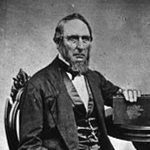
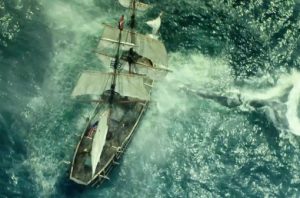 I’m sure most of us have read “Moby Dick” at some point in our school years. For those who haven’t, it was the story of a whale, and while I didn’t know this before, the book was actually based on a true story. The book, written by Herman Melville, was first published in 1851. Melville had heard about the incident involving a whaling ship that had been attacked by a sperm whale…a giant 85 foot sperm whale, a few years earlier, and like most writers, there are just some things that you can’t get out of your head. Those are the stories that you know that you must write. Melville’s research gave him the facts of the incident, but it didn’t take him full circle to actually being in the place where that ship had started it fateful journey…Nantucket. Melville knew that someday he would have to make the trip to the Massachusetts island, where Captain George Pollard Jr lived. Pollard was the man Melville had modeled his fictional Captain Ahab after.
I’m sure most of us have read “Moby Dick” at some point in our school years. For those who haven’t, it was the story of a whale, and while I didn’t know this before, the book was actually based on a true story. The book, written by Herman Melville, was first published in 1851. Melville had heard about the incident involving a whaling ship that had been attacked by a sperm whale…a giant 85 foot sperm whale, a few years earlier, and like most writers, there are just some things that you can’t get out of your head. Those are the stories that you know that you must write. Melville’s research gave him the facts of the incident, but it didn’t take him full circle to actually being in the place where that ship had started it fateful journey…Nantucket. Melville knew that someday he would have to make the trip to the Massachusetts island, where Captain George Pollard Jr lived. Pollard was the man Melville had modeled his fictional Captain Ahab after.
On his last day in Nantucket, Melville met George Pollard Jr, who was the captain of the Essex. He was an old man of 60 years, and in reality, probably didn’t resemble the captain of the Essex much at that point. He had been through so much. As they talked, Pollard told Melville’s fictional story from a far too real perspective…being there. Pollard was just 29 years old when he and his crew set out for a voyage that was to have lasted two and a half years. After the sinking of the Essex, Pollard told the full story to fellow captains over a dinner shortly after his rescue from the ordeal, and to a missionary named George Bennet. Bennet thought the tale was almost a confession. He told them of “92 days and sleepless nights at sea in a leaking boat with no food, his surviving crew going mad beneath the unforgiving sun, eventual cannibalism and the harrowing fate of two teenage boys, including Pollard’s first cousin, Owen Coffin.” Then he said, “But I can tell you no more…my head is on fire at the recollection. I hardly know what I say.”
Just two days after leaving Nantucket, Essex’s ordeal began. It was August 14, 1819. They hit a squall that destroyed it’s topgallant sail, almost causing it to sink. Still, Pollard continued on, making it to Cape Horn five weeks later. But the 20-man crew found the waters off South America nearly fished out, so they decided to sail for distant whaling grounds in the South Pacific, far from any shores. By November of 1820, after months of a prosperous voyage and a thousand miles from the nearest land, whaleboats from the Essex had harpooned whales that dragged them out toward the horizon in what the crew called “Nantucket sleigh rides.” Owen Chase, the 23 year old first mate, had stayed aboard the Essex to make repairs while Pollard went whaling. It was Chase who spotted a very big whale…85 feet in length, he estimated…lying quietly in the distance, its head facing the ship. Then, after two or three spouts, the giant whale headed straight for the Essex, “coming down for us at great celerity,” Chase would recall, “at about three knots. The whale smashed head-on into the ship with such an appalling and tremendous jar, as nearly threw us all on our faces.”
The whale passed underneath the ship and began thrashing in the water. “I could distinctly see him smite his jaws together, as if distracted with rage and fury,” Chase recalled. Then the whale disappeared. The crew was addressing the hole in the ship and getting the pumps working when one man cried out, “Here he is…he is making for us again.” Chase spotted the whale, his head half out of water, bearing down at great speed…this time at six knots, Chase thought. This time it hit the bow directly under the cathead and disappeared for good, but the damage was done. The water rushed into the ship so fast, the only thing the crew could do was lower the boats and try to fill them with navigational instruments, bread, water and supplies before the Essex turned over on its side. Pollard saw his ship listing from a distance, tand returned to see the Essex in ruin. In shock, 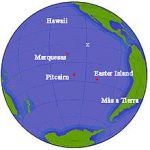
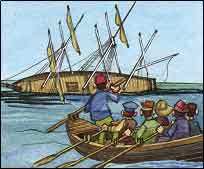 he asked the first mate what had happened. I’m sure the tale seemed incredulous, but the evidence was right there staring them in the face. When the other boats returned, the men sat in silence, their captain still pale and speechless. Some, Chase observed, “had no idea of the extent of their deplorable situation.” Out of the original 20 men and 3 boats that set out, only 5 men would survive the ordeal, and that included a long time floating around the ocean, men dying, and the eventual cannibalism required to survive.
he asked the first mate what had happened. I’m sure the tale seemed incredulous, but the evidence was right there staring them in the face. When the other boats returned, the men sat in silence, their captain still pale and speechless. Some, Chase observed, “had no idea of the extent of their deplorable situation.” Out of the original 20 men and 3 boats that set out, only 5 men would survive the ordeal, and that included a long time floating around the ocean, men dying, and the eventual cannibalism required to survive.
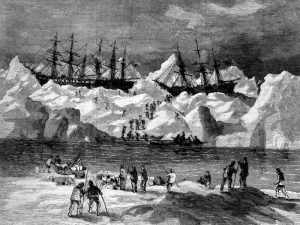 Over the centuries, many ships have been lost at sea, but it isn’t every day that 33 ships are lost together. That was the case in September of 1871, however, when the ice off of the coast of Alaska trapped 33 out of 40 commercial whaling ships who were hunting for bowhead whales in the Artic Ocean. Normally, when ice traps a ship, it eventually releases it’s grip with the shifting winds, but in this case that didn’t happen, and the results were disastrous. Within a few weeks, the ships were destroyed, and the families and crew members had to evacuate and head for one of the ships that was not trapped. As the 1,219 additional people boarded the remaining 7 ships, those ships became overloaded. They had to throw things overboard to allow for the extra weight. Things like their equipment and their precious cargo were lost. The already struggling whaling industry in the United States was basically dealt a final blow. The amazing thing was that no one died, but the loss of 33 ships over those weeks was devastating enough to the whaling industry.
Over the centuries, many ships have been lost at sea, but it isn’t every day that 33 ships are lost together. That was the case in September of 1871, however, when the ice off of the coast of Alaska trapped 33 out of 40 commercial whaling ships who were hunting for bowhead whales in the Artic Ocean. Normally, when ice traps a ship, it eventually releases it’s grip with the shifting winds, but in this case that didn’t happen, and the results were disastrous. Within a few weeks, the ships were destroyed, and the families and crew members had to evacuate and head for one of the ships that was not trapped. As the 1,219 additional people boarded the remaining 7 ships, those ships became overloaded. They had to throw things overboard to allow for the extra weight. Things like their equipment and their precious cargo were lost. The already struggling whaling industry in the United States was basically dealt a final blow. The amazing thing was that no one died, but the loss of 33 ships over those weeks was devastating enough to the whaling industry.
Not much was found of the ships for many years, although debris washed up on shore periodically. Still, no artifacts specifically tied to the shipwrecks could be found beneath beneath the water. In 2015, thanks to technological advances, archaeologists have found the wreckage of what appears to be two of the lost ships. They are located at the bottom of the Chukchi Sea off the coast of Wainwright, Alaska, but an exact location is not being given. Brad Barr, an archaeologist with the National Oceanic and Atmospheric Administration (NOAA), estimated the losses caused by what has been dubbed the Great Whaling Disaster of 1871 would have reached the equivalent of a little more than $33 million today. As Barr told LiveScience: “The event has been attributed as possibly a major contributory factor in the demise of whaling in the U.S.”
Barr began his hunt in late August 2015. He and a team of researchers from the Maritime Heritage Program of the NOAA’s Office of National Marine Sanctuaries surveyed the floor of the Chukchi Sea off the coast of the Inupiat village of Wainwright, in northwestern Alaska. They used state of the art sonar and underwater sensing technologies. They found the magnetic signatures of two shipwrecks they believe are part of the lost 1871 fleet, including the outlines of their flattened hulls. Underwater video revealed anchors, fasteners, pins, and ballast. They even discovered some of the special brick lined pots that the whalers used to heat the whale blubber to turn it into whale oil that was used to fire up oil lamps and make soap, margarine, and other products before the advent of petroleum. While the scientists can’t say definitively that the two wrecked ships were among the 33 lost in 1871, there are a lot of signs that point to it. More than half of all the ships known to have wrecked in the area went down in the 1871 event, and both wrecks, their beams and hull timbers were similar to those used in whaling ships from the late 19th century. The team was also aided in their efforts by changing sea ice levels, increasing opportunities to uncover lost shipwrecks even off Alaska’s northern coast. During the  expedition to the Chukchi Sea, the absence of ice was notable, and the archaeologists reportedly found artifacts from the wrecked ships “just sitting there” for them to find, Barr’s said. The team discovered remnants of a sandbar, which they believe protected the artifacts from sea ice. The NOAA is not really worried that the historic site will be disturbed, because historic preservation laws still apply. Also, there is no gold bullion, jewels or other precious cargo that might draw fortune hunters. Nevertheless, they are not publicizing the site’s exact location. Instead, they will provide all information to the Alaska Office of History and Archaeology, the agency in charge of protecting sites and relics in Alaska.
expedition to the Chukchi Sea, the absence of ice was notable, and the archaeologists reportedly found artifacts from the wrecked ships “just sitting there” for them to find, Barr’s said. The team discovered remnants of a sandbar, which they believe protected the artifacts from sea ice. The NOAA is not really worried that the historic site will be disturbed, because historic preservation laws still apply. Also, there is no gold bullion, jewels or other precious cargo that might draw fortune hunters. Nevertheless, they are not publicizing the site’s exact location. Instead, they will provide all information to the Alaska Office of History and Archaeology, the agency in charge of protecting sites and relics in Alaska.

